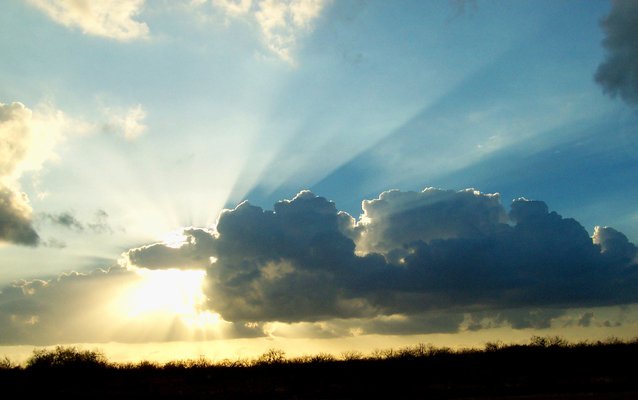
Blog

I Am Not a Space that God Does Not Occupy: Part VI – A Brief History of Consciousness, Continued
Israel came into existence on the arrowhead of conscious evolution, a process that is holy and irreversible, and its greatest thinkers (Jesus being one of them) have always been ahead of the curve, breaking through the conceptual logjams du jour, carrying consciousness to the next level. In this respect I profoundly honor the Old Testament and could not even begin to make sense of my own Christian journey without it.

I Am Not a Space that God Does Not Occupy: Part V – A Brief History of Consciousness
But scripture is indeed its own unique brand of wonderfulness, and over the nearly seven decades it’s been part of my life, I have come to appreciate its sacredness in a whole different way. Back then I looked upon it as the unchanging revelation of the one true God. Now I look at it as an extraordinary, sacred archive of the evolution of human consciousness.

I Am Not a Space that God Does Not Occupy: Part IV – Jesus Was Not a Monotheist (!?)
As I began to pay more attention to the subtext in Christophany, what I began to see appearing before my eyes was something even more radical. Was I really understanding correctly that Panikkar seemed to be implying that Jesus was not a monotheist?

I Am Not a Space that God Does Not Occupy: Part III – Panikkar
I had been slowly drifting toward a more unitive worldview for decades, but it was Raimon Panikkar who finally put me across the line.

I Am Not a Space that God Does Not Occupy: Part II – Panentheism
The whole implicit collision course didn’t really hit home until years later—decades later, in fact; post Ph.D., post seminary, post ordination—when, by now a commissioned practitioner of Centering Prayer, I was regularly giving introductory workshops in local churches and seminaries.

I Am Not a Space that God Does Not Occupy – Part I: The Light Within
Never during my own childhood would the thought have even crossed my mind that a human being might be a space where God was not. Raised in the rolling countryside of southeastern Pennsylvania, I grew up in an easy, natural intimacy between the divine and human realms, an intimacy intensified through the regular silent worship at the local Quaker school I was privileged to attend.

Anointing Jesus: How Mary Magdalene Initiated the Love at the Heart of Christianity
European students of mine had been reporting their positive reviews, noting with delight that this Hollywood portrayal of Mary Magdalene was uncanny in its resonance with my own description in my book The Meaning of Mary Magdalene. The filmmakers—writers Helen Edmundson and Philippa Goslett, and director Garth Davis—did indeed portray Mary Magdalene in a pure and imaginative way, re-centering her as an apostle without the usual sexual or erotic innuendos.

Is the Imaginal Realm Real
I cannot emphasize strongly enough that the word imaginal does not mean “imaginary.” That unfortunate but all too understandable confusion was created by Henry Corbin, the noted Islamic scholar, when he introduced the term Mundus Imaginalis to name that intermediate, invisible realm of causality that figures so prominently in mystical Islamic cosmology.

Where is the Imaginal Realm Located
Traditional metaphysical maps based on “the great chain of being” will tend to situate the imaginal as the station “above” ours, the next more subtle realm in a great hierarchical procession extending from the pure, ineffable will of God through the logoic (causal), angelic, imaginal, and sensible (us).

Introducing the Imaginal
A three-part blog series by Cynthia Bourgeault. As many of you know, I have been breaking ground on a new book on the Imaginal Realm. While “breaking ground” may be a bit of an overstatement, I at least have a few rough sketches on the drawing board, which in the spirit of the season (thanksgiving and anticipation), I thought I’d throw out to you as trailers.